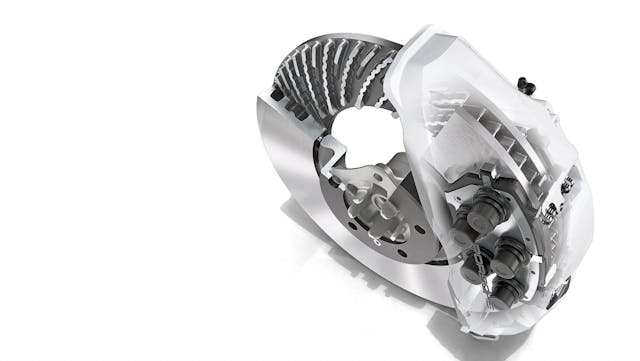Media | Articles
The wild technology behind Porsche’s newest brakes
The earliest automobiles had brakes made of wood, pressed against the rim or tire by a hand lever. Now, saying a car’s brakes are “wooden” is almost as cliché as determining that it “understeers at the limit.” Utter either phrase amidst intelligent company at your own risk.
Chintzy phraseology or not, the evolution of brake technology is no joke. In 2017, Porsche debuted a brake technology that it hoped would change the way we think about brake wear. Three years later, was Porsche just pulling our collective leg? Jason Fenske of Engineering Explained took a deep dive into the claims.
The acronym is PSCB, which is not exactly catchy on its own. The long form is Porsche Surface Coated Brakes, and the concept is quite interesting. Essentially, Porsche took a standard iron brake rotor and coated it with tungsten carbide, the same critical ingredient in high-end cutting tools. This gives the rotors a near-mirrored finish and requires special (read: expensive) brake pads. From the outside, these surface-coated brakes simply appear to be polished rotors—how could they possibly cost $11,000 for a basic brake job?
Marketplace
Buy and sell classics with confidence
The five-figure service cost is entirely due to the complexity of the brakes’ production. As explained by Fenske on his signature whiteboard, the process of applying the 0.039-inch thick coating is no walk in the park. The coating must be heated and then sprayed on the rotor at a velocity higher than the speed of sound. This coating is thinner than a human hair but tougher than iron.
In fact, Porsche claims a 30 percent longer service life for these new super-rotors relative to the standard iron discs; tungsten carbide coating is that tough. (Though, for the record, carbon-ceramic rotors are still king of the braking hill.) Pleasantly, that level of durability does not come at the cost of braking performance, because pedal effort does not increase despite rising brake temperature over repeated hard stops. The final benefit is that the new pad compound combines with the mirror-like finish to create an effective braking system without the brake dust that clean-freak driving enthusiasts hate with such a passion.
Naturally, that shiny new tech comes at a cost. Fenske reached out to a local Porsche dealer to get parts cost—only the parts, not the labor—for the three brake systems that could be optioned on the Cayenne model. The standard iron brakes came in just under $2400, the PSCB at $11,000, and the carbon-ceramic units at an eye-watering $32,000.
Since the PSCB brakes give better-than-iron but not-quite-carbon-ceramic levels of performance, the price makes sense. Also, it’s worth a reminder that the 2020 Porsche Cayenne starts at $70,200 (destination included) with zero options. Cayenne buyers aren’t exactly pinching pennies.
Is the increased stopping power and decreased brake dust of these shiny (literally) new brakes worth the extra coin? Tell us in the Hagerty Community below.










